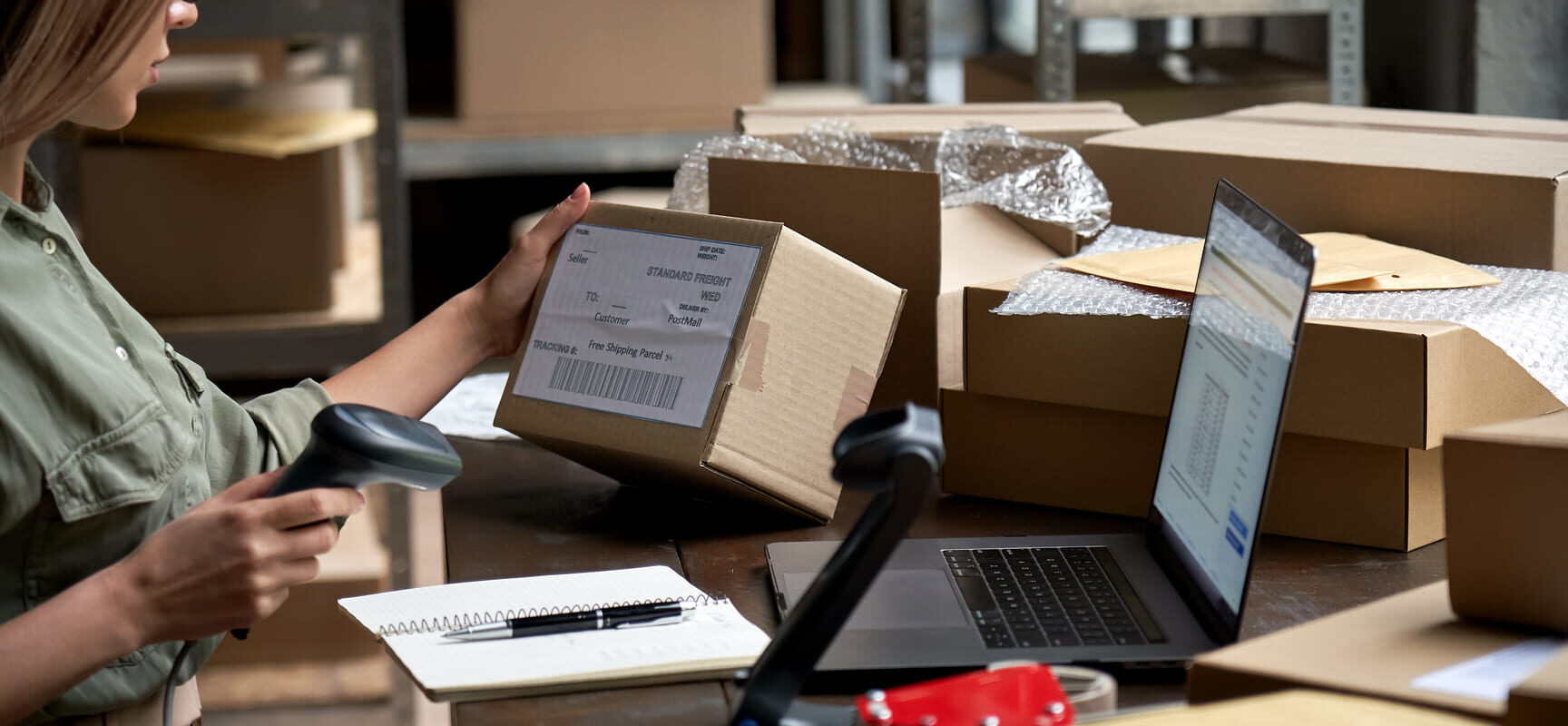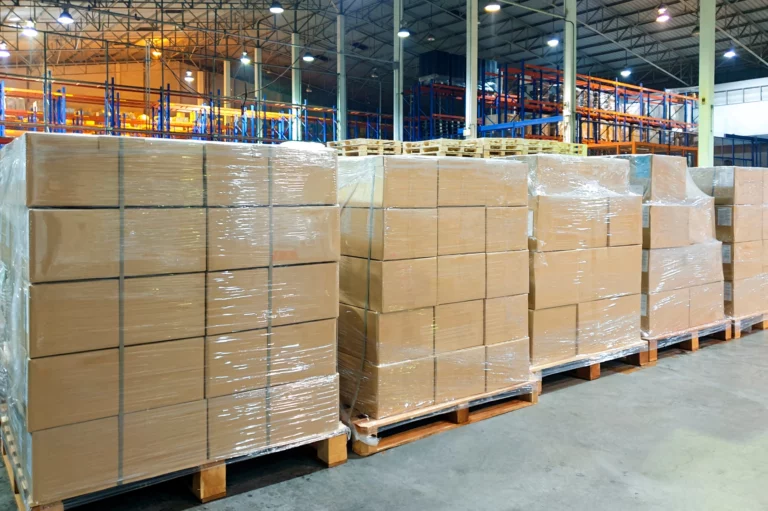Order Fulfillment: Definition, Process, and Importance of Accuracy in Ecommerce Logistics

Order fulfillment is the complete, end-to-end process from when a customer places an order to the final delivery of the product. It encompasses every step: storing and managing inventory, picking and packing items, generating shipping labels, and dispatching orders. In ecommerce, order fulfillment must be both fast and error-free; meeting high customer expectations for quick, accurate delivery is essential for building trust and brand reputation. Efficient, accurate fulfillment “reduces returns, ensures timely deliveries, and builds customer trust”. In short, fulfilling orders accurately and on time is a cornerstone of any successful online retail operation.
Key Steps in the Order Fulfillment Process
Order fulfillment typically involves multiple stages. These begin with receiving inventory and end with shipping products out, often including handling returns. An efficient process ensures each order moves smoothly from sales to customer. Below are the main steps:
- Receiving Inventory: When goods arrive from suppliers or manufacturers, they are unloaded and verified. Staff compare received quantities against purchase orders, inspect for damage, and enter items into the inventory system. Accurate receiving — counting and quality-checking each shipment — prevents later errors and ensures the right products are stocked for orders.
- Inventory Storage: Received products are then placed into organized storage locations (shelves, bins, pallets) in the warehouse. Warehouses use strategic slotting (storing fast-moving items in easy-to-reach places) and inventory management tools to speed up later picking and reduce errors. Maintaining accurate stock records at this stage is critical for efficient picking and to avoid stockouts or overstock.
- Order Processing: Once a customer order is received, order processing begins. This involves verifying customer details (name, shipping address, payment) and checking product availability. Modern fulfillment uses integrated order management software (often linked to the online store) to automatically generate pick lists, packing slips, and shipping labels. Automated checks (e.g. barcode scans, address validation) further reduce human error at this stage.
- Picking: During picking, warehouse staff or automated systems collect the items listed on the order’s pick list. A picker uses the packing slip to locate each product in the warehouse. Common strategies include zone picking (assigning workers to specific warehouse zones) or batch picking (collecting identical SKUs for multiple orders together) to improve speed. Accurate picking — grabbing the correct items and quantities — is vital to fulfill the order correctly the first time.
- Packing: Picked items are then securely packed. Fulfillment teams choose appropriate packaging materials (boxes, mailers, bubble wrap) that protect products and minimize size and weight. Packages are labeled clearly, often with scannable barcodes or QR codes, and include necessary documents (packing slips, return labels) for tracking and easy returns if needed. Optimizing package dimensions (to reduce dimensional weight) can also lower shipping costs.
- Shipping: The packed order is handed off to a carrier for delivery. Merchants (or their 3PL partners) purchase shipping labels from carriers like UPS, FedEx, USPS, or regional couriers, and affix them to each package. Many fulfillment providers automate this by comparing carrier rates and scheduling pickups. Once shipped, tracking information is generated, enabling the business (and customer) to monitor the delivery.
- Returns Processing (if needed): If customers return items, a return process is executed. Generally, return shipping labels are provided with the original package. Returned products are inspected on arrival: undamaged, resalable items are returned to inventory, while damaged or obsolete items may be disposed or returned to vendors. Efficient returns handling helps recover value and maintains customer goodwill.
Each of these stages aligns with industry definitions of order fulfillment. Whether handled in-house or by a third-party center, following these steps carefully ensures orders are completed accurately and on schedule.
Importance of Accurate Order Fulfillment in Logistics
Accurate order fulfillment is crucial to logistics efficiency and customer satisfaction. Each error (wrong item, missing part, late shipment) directly impacts costs and reputation. For example, filling orders correctly reduces returns and re-shipping expenses, while on-time delivery bolsters customer trust. NetSuite emphasizes that “efficient order fulfillment is key to your brand’s reputation, your company’s profits and your ability to retain clients”. In contrast, mistakes in fulfillment (wrong shipments or delays) often lead to negative reviews and lost future sales. By minimizing errors through careful checking and tracking, businesses keep customers happy and avoid costly mistakes. In logistics terms, accurate fulfillment means a smoother supply chain: inventories remain balanced, warehouse operations stay efficient, and customers receive exactly what they expect.
Fulfillment Strategies and Models
Companies can adopt different fulfillment models based on their needs and scale. Common approaches include:
- In-House Fulfillment: The business manages the entire process internally, using its own warehouse staff and systems. This provides maximum control and branding (e.g. customized packaging), but requires significant investment in space, labor, and technology.
- Third-Party Logistics (3PL): The company outsources fulfillment to a specialized provider. 3PLs handle warehousing, pick-and-pack, and shipping using their facilities and systems. This can lower costs through economy of scale (discounted shipping rates, bulk materials) and access to advanced technology. OLIMP’s platform, for example, connects retailers to a network of 3PL warehouses and fulfillment centers that offer scalable order fulfillment services.
- Drop Shipping: Here, the retailer never stocks the product. Instead, when an order is placed, the retailer passes the order to a supplier or manufacturer who ships directly to the customer. This eliminates inventory holding costs, but often results in longer lead times and less control over packaging and service.
- Hybrid Models: Many businesses use a combination of the above. For instance, they may fulfill some orders in-house and outsource overflow or specialized orders to a 3PL. According to industry resources, these and other strategies (including self-fulfillment vs. outsourcing) can be chosen based on order volume, geographic coverage, and speed requirements.
Choosing the right model depends on factors like volume, budget, and desired service level. As OLIMP notes, linking retailers with thousands of vetted 3PL warehouses lets businesses scale fulfillment up or down (for example, handling holiday surges) without long-term commitments.
Technology in Order Fulfillment
Modern fulfillment relies heavily on technology to increase speed and accuracy. Tools like Warehouse Management Systems (WMS) and inventory management software automate many tasks. For example, barcode scanners and RFID readers track products in real-time as they move through the warehouse, reducing manual counting errors. Integrated systems automatically generate pick lists, packing slips, and shipping labels once an order is confirmed. Shipping software can compare carrier rates and create labels in bulk. Advanced analytics and AI can predict stock needs to avoid stockouts. Automation in picking, packing, and shipping “allows businesses to handle high order volumes quickly and accurately”. These technologies also provide real-time tracking and transparency: customers get shipment updates and businesses maintain visibility into inventory and order status, further improving efficiency and trust.
Challenges in Order Fulfillment
Despite best practices, businesses often face hurdles in fulfillment, such as:
- Inventory Accuracy: Inaccurate stock counts can lead to stockouts (lost sales) or overstock (excess costs). Without real-time tracking or regular audits, it’s hard to know exactly what’s in the warehouse.
- Delivery Delays: External factors like carrier delays, weather, or global disruptions can slow shipments. Fast shipping expectations (set by leaders like Amazon) make any delay noticeable to customers.
- Returns Management: Accepting and processing returns quickly is essential but resource-intensive. Efficient returns handling requires reverse-logistics processes to inspect, restock, or dispose of returned items, or it will frustrate customers and tie up inventory.
- Order Accuracy: Errors in picking or packing lead to incorrect orders. Even with the right inventory, a simple picking mistake means an order must be redone. Such errors directly raise costs (reshipping, refunds) and hurt satisfaction.
- Scalability: Fluctuating demand (seasonal peaks, promotions) can overwhelm fulfillment operations. A sudden volume spike may require extra labor or space; lacking this can cause backlogs or stockouts.
Overcoming these challenges often involves a mix of planning and technology. For instance, businesses can partner with 3PLs to handle peak volumes or use multiple carriers to improve delivery speed. Implementing real-time inventory systems and regular cycle counts helps maintain accuracy. Clear communication (e.g. tracking updates) can also mitigate the impact of delays on customer satisfaction.
Best Practices for Optimizing Fulfillment
To improve fulfillment efficiency and accuracy, consider these strategies:
- Use Automation: Employ a WMS or fulfillment software to automate pick lists, packing, and label generation. Automation reduces manual errors and speeds up each stage.
- Optimize Inventory Management: Implement real-time inventory tracking and demand forecasting to keep stock at optimal levels. This prevents stockouts or excess and speeds up picking.
- Improve Communication: Provide customers with tracking information and proactive updates. Internally, ensure coordination between sales, warehouse, and shipping teams to quickly address issues.
- Regular Audits and Training: Conduct periodic cycle counts to verify inventory accuracy. Train staff on best practices and use clear labeling to minimize picking mistakes.
- Choose the Right Partners: If outsourcing, select 3PLs with proven reliability and technology integration. As Olimp’s platforms show, a network of vetted fulfillment centers can scale to your needs and often offer integrations with popular ecommerce platforms.
By following these best practices, businesses can achieve smoother fulfillment with fewer errors, lower costs, and happier customers.
In summary, order fulfillment is the critical final link in the ecommerce supply chain. It turns customer orders into deliveries, so doing it accurately and efficiently is essential for any brand’s success. Carefully defining your process steps (receiving, picking, packing, shipping, etc.), choosing an appropriate fulfillment strategy (in-house vs. 3PL or hybrid), and leveraging the right technology are all key to meeting customer expectations. When orders are fulfilled correctly and on time, businesses save costs and build loyalty; when errors occur, it can damage reputation and profitability.
You may be interested in

Direct-to-Consumer (D2C) Fulfillment Guide
Direct-to-consumer (D2C) fulfillment means shipping products directly from a brand’s own warehouse or fulfillment center straight to the customer. This direct shipping model bypasses traditional retailers and distributors, giving brands full control over packaging, shipping speed, and the customer experience. By eliminating middlemen and retail markups, D2C fulfillment can improve profit margins and strengthen customer […]

Guide to Choosing the Right Fulfillment Partner
What Is a Fulfillment Partner? A fulfillment partner (often a 3PL or fulfillment company) is a specialist third-party logistics provider that manages the entire order process on behalf of an online retailer. In practice, a fulfillment partner receives and stores your inventory in its warehouse, then picks, packs, and ships customer orders as they come […]

Fulfillment and Logistics: The Ultimate Guide to Efficient Order Fulfillment
Efficient fulfillment and logistics are the lifeblood of any successful e-commerce business. In simple terms, fulfillment logistics covers every step from receiving an order to delivering it to the customer – including inventory management, order processing, picking and packing, shipping, and even handling returns. When these steps run smoothly, customers get their orders accurately and […]
Ready to streamline your warehousing needs?
Request a quote today and discover how OLIMP's tailored solutions can optimize your operations